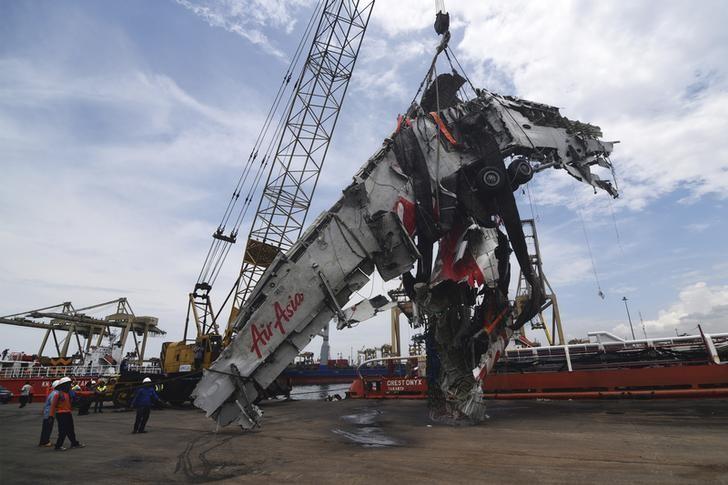-
Tips for becoming a good boxer - November 6, 2020
-
7 expert tips for making your hens night a memorable one - November 6, 2020
-
5 reasons to host your Christmas party on a cruise boat - November 6, 2020
-
What to do when you’re charged with a crime - November 6, 2020
-
Should you get one or multiple dogs? Here’s all you need to know - November 3, 2020
-
A Guide: How to Build Your Very Own Magic Mirror - February 14, 2019
-
Our Top Inspirational Baseball Stars - November 24, 2018
-
Five Tech Tools That Will Help You Turn Your Blog into a Business - November 24, 2018
-
How to Indulge on Vacation without Expanding Your Waist - November 9, 2018
-
5 Strategies for Businesses to Appeal to Today’s Increasingly Mobile-Crazed Customers - November 9, 2018
AirAsia QZ8501: Crash Caused by Pilot Response To Equipment Malfunction
The AirAsia plane that crashed into the Java sea in December past year killing 162 people was caused by the pilots’ response to a crack in the soldering on the rudder control system, Indonesian investigators have said.
Advertisement
Investigators had previously blamed bad weather for bringing down the plane, but the new findings show both poor equipment and inadequate training for emergency situations were to blame.
The Airbus A320 aircraft crashed less than halfway into a two-hour flight from Indonesia’s Surabaya city to Singapore.
Following a year-long investigation, officials indentified a fault with the plane’s rudder control system, which sent warning alerts to the pilots repeatedly, that had contributed to the crash.
The actual cause of the crash was found to be a “prolonged stall condition that was beyond the capability of the crew to recover”, that resulted in the aircraft impacting the Java Sea with the loss of all 162 passengers and crew. “Today maybe they improvise by pulling the circuit breaker, tomorrow they may do something else”, said Utomo.
A similar crash, or more specifically, a similar reaction to such an alert by a US crew is “very unlikely”, Ganyard said, citing “better training, better pilots, better maintenance, better procedures”. The air traffic control had showed the pilots that the plane was entering a cloudy area, and so they asked permission to ascend from 9,753 meters to 11,582 meters to dodge the clouds, but their request was denied due to heavy air traffic. Minutes after reaching 37,000 feet, the plane disappeared from radar.
Investigators have concluded that cracked solder joints on a circuit board were the main contributor to the fatal crash of Indonesia AirAsia flight QZ8501 on 28 December 2014.
The report is not meant to attribute blame but rather to make recommendations to avoid future accidents. “With safety being top priority, Airbus is fully committed to push the safety track record of our industry even further” the company stated.
Fernandes stressed that aviation authorities would “not leave any stone unturned” in ensuring that lessons would be learned from the tragedy.
Advertisement
AirAsia CEO Tony Frenandes released a statement acknowledging the report and promising change though suggesting that it was not just the airline’s fault.





























